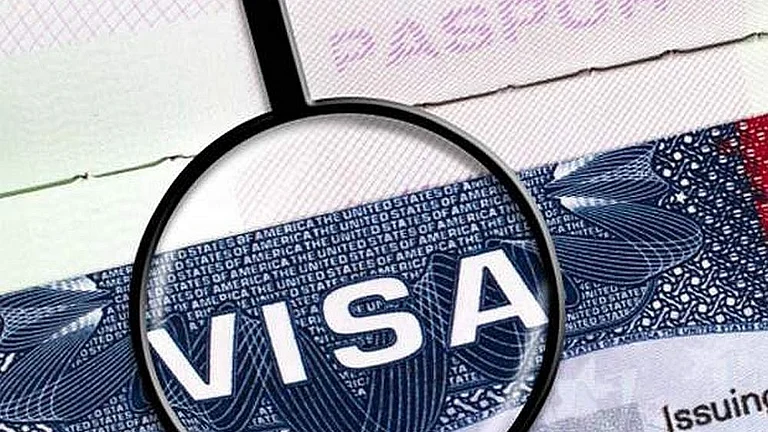On the 11th day of hearing of pleas challenging the abrogation of Article 370, the Centre argued that the Constitution of Jammu and Kashmir was subordinate to the Constitution of India and was effectively a legislation and not a constitution in the traditional sense.
Solicitor General Tushar Mehta, appearing for the Centre, also listed the disadvantages that Articles 370 and 35A of the Constitution brought to the people to J&K. He said that provisions such as reservations for tribals were not implemented in J&K and an "artificial" category of permanent residents was created that was discriminatory under these two provisions.
A five-judge constitution bench of the Supreme Court headed by Chief Justice of India (CJI) DY Chandrachud is hearing a clutch of petitions challenging the abrogation of Article 370 by the Narendra Modi government. On August 5, 2019, the Modi government abrogated Article 370 that provided J&K its special status. Until 2019, the J&K had a separate constitution and a separate flag. In addition to scrapping the special status, the Centre also bifurcated J&K into two Union Territories of J&K and Ladakh.
Besides Chandrachud, the SC's constitution bench comprises Justices SK Kaul, Sanjiv Khanna, BR Gavai, and Surya Kant.
J&K Constituent Assembly was in nature legislature: Centre
The Centre has argued that the J&K Constituent Assembly was effectively a legislative body and the erstwhile Constitution of J&K was a legislation and not a constitution in its true sense.
Solicitor General Tushar Mehta, appearing for the Centre, also listed the several constitutional provisions that were not extended to J&K.
"Constituent Assembly is not a law making body in that sense. My submission is that Constitution of J&K is at par with a legislation only, it's not a kind of a Constitution as we understand, not a document of governance," said Mehta, as per Live Law.
Mehta also pointed out that provisions that could not be implemented in J&K because of Articles 370 and 35A.
"Notably, it did not apply the following at all (to J&K)- DPSPs, the states in Part B, scheduled and tribal areas. Any tribal reservations etc never applied in J&K till 2019...This CO provided for a separate provision for permanent residents of J&K in Article 7- that is citizenship of Indian Constitution by inserting 35A...It removed references to Scheduled Tribes from Article 15(4). So one, you alienate those who do not fall within the artificially created definition of permanent residents. Second, you alienate those belonging to scheduled tribes...Preventive Detention - Art 21 & 22 would not apply...It is unthinkable in any constitutionally governed civil society. Article 35C was added. India's constitution was amended by the Government of India in consultation with state government adding this," said Mehta, as per Live Law.
CJI Chandrachud also said that the insertion of Article 35A meant that three fundamental rights of the Constitution of India were not extended to J&K.
"See the 1954 order. It applied entirety of Part III (fundamental rights) and so Articles 16, 19 applied to J&K. Now, you bring in Article 35A which creates an exception under three areas: employment under state govt, acquisition of immovable properties, and settlement in the state. Though Part III is applicable, when you introduce A 35A, you take away three fundamental rights- Article 16(1), right to acquire immovable property which was then a fundamental right under 19(1)(f), A 31, & settlement in the state which was a fundamental right under 19(1)(e). So those that the Constitution expressly made the provisions of Article 19 applicable, which would include these three rights and Art 16, by enacting 35A, your virtually took away the fundamental rights," said Chandrachud, as per Live Law.
J&K Constituent Assembly always meant Legislative Assembly: Centre
The Centre also argued that the Constituent Assembly in J&K always meant the Legislative Assembly.
The interpretation is key to the case as the President of India could amend (and therefore abrogate) Article 370 with the consent of the Constituent Assembly of J&K. Those opposed to Modi government's abrogation of Article 370 argue that as the Constituent Assembly ceased to exist in 1957, the power to amend or abrogate Article 370 also ceased to exist and the provision became permanent. The Modi government, on the other hand, interpreted that the powers of the Constituent Assembly transferred to J&K legislative assembly and, since at the time of abrogation the legislative powers were with the Parliament, the Parliament could also amend or abrogate Article 370.
"Mehta then argued that in the Context of J&K, the term Constituent Assembly always meant Legislative assembly. In 1951, when Yuvraj Karan Singh issued a Proclamation to create a Constituent Assembly to draft a Constitution for the State, Mehta argued that J&K was already a part of India under Article 1. Therefore, the Constituent Assembly could never have created a 'Constitution' when it was already bound by another. So, Mehta submitted, The J&K Constituent Assembly made a 'legislative enactment', much like a legislative assembly would do," reported Supreme Court Observer.
Mehta also said that the two terms constituent assmebly and legislative assembly were used interchangably.
"He [Mehta] then argued that the terms “Constituent Assembly” and “Legislative assembly” were used interchangeably, in a “floating way” in the J&K context. For instance, in C.O. 39 issued in March 1952, the Constituent Assembly was treated as the Legislative assembly for the purpose of election of the President. Mehta argued that this showed that they were effectively the same body, and that until the Constituent Assembly dissolved, it passed several laws, apart from the J&K Constitution as well," reported SC Observer.
When the SC said that the two terms were equated for the purpose of lawmaking at the time, Mehta disagrred and said that it was not an interim usage as there were other precedents as well of words being replaced when the terms got obselete, such as Sadr-i-Riyasat becoming Governor.
"Mehta disagreed, and stated that it was not just an interim solution while the Legislative Assembly was formed. There appeared to be a practice of using these words interchangeably when one term became otiose. For instance, he pointed out, in Article 370, the ‘Sadr-i-Riyasat’ was changed to the ‘governor’ when the ‘Sadr-i-Riyasat’ was made obsolete," said Mehta, implying that the legislative assembly was effectively the successor of the constituent assemebly.


























